Causes of diabetes in children
Could your child develop diabetes or born a diabetic? To answer this question, we need to discuss the factors and reasons for developing diabetes. First, let’s illustrate the difference between Diabetes Type 1 and Diabetes Type 2, the causes of diabetes in children and which type is more common in children.
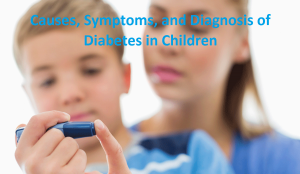
Overview of diabetes type 1 and diabetes type 2
Causes of diabetes in children type 1
It is more common in Neonates. Because Diabetes Type 1 is related to gene mutations. These mutations result in defects upon synthesizing and secreting Insulin; which is the hormone that is responsible for the main source of the body which is glucose. Accordingly, a moderate or complete absence of Insulin occurs.
Diabetes Type 1 is more common in children, neonates and young adults below 20 years. On the other hand, it is rare in adults above 20. Thus, it is called Juvenile Diabetes Mellitus means that it happens in children and infants.
Each year; The number of Diabetes Type 1 increases by 1.8% and Diabetes Type 2 by 4.8%. Thus, Diabetes Type 2 is more prevalent than Diabetes Type 1.
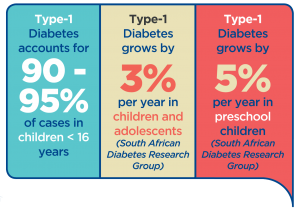
In a study published in Diabetes Research and Clinical Practice Journal on May 2019, it revealed that Diabetes Type 1 is decreasing in incidence through infants and toddlers while increasing in children above 10 years.
Causes of diabetes in children type 2
- Walking through different nations: If you are Hispanic, African, American, Native American, Native Alaska, Asian American, Pacific Islander, then you are at risk.
- Family history of Diabetes Type 2: if any of your parents or ancestors had diabetes, then you are most likely to develop diabetes as well.
- A pregnant woman with diabetes mellitus or developing gestational diabetes, which is diabetes develops during pregnancy only, then she recovers after giving birth.
- If the baby is born overweight.
- If your child is overweight.
- lack of child physical activity.
- Eating plenty of junk foods, sweets, carbohydrates throughout the day.
- Eating a small or limited amount of healthy food. And let me clarify the hazard that you are doing to your body during metabolism in case of unhealthy food. During metabolism, the body breakdown food to get the essentials it needs like energy, minerals, elements, fats, etc. When you eat small amounts of healthy food like fruits and vegetables, you disturb and confuse your body’s metabolism. Also, when your body seeks that energy and essential elements it needs, it finds not enough amount. Accordingly, it gives a chance of increasing intake or starvation for unhealthy food like carbohydrates, sugars, pickles, etc.…. as a result, you are decreasing the benefit your body and your child needs to be healthy and normal.
Now, let’s discuss a new approach which is whether there is a possibility to know if the child has diabetes or at risk or not.
Your child will drink water more than usual throughout the day.
- Increasing requires going to the toilet, i.e. Increased frequency of urination and amount of urine excreted per one time.
- Increasing appetite; Your child will cry or demand more food than usual.
• Weight loss (In case of Diabetes Type 1), and Weight gain or your child is already overweight or obese. (In case of Diabetes Type 2).
Here is the explanation behind, why is there a weight loss in Diabetes Type 1, and commonly weight gain in Diabetes Type 2?
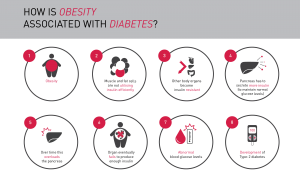
In Diabetes Type 1, the problem arises from a deficiency of insulin or complete absence, the body shifts to using fats for energy demands. So, the child appears thin or losing weight. However, in Diabetes Type 2, the problem arises from insulin resistance by your cells, which means insulin is not capable of doing its function by entering the glucose into your cells. First, the pancreas increases the amount of insulin it secretes in compensation of the cell’s unresponsiveness. However, unfortunately, the cells still resist. By the time, the pancreatic beta cells become exhausted and cannot secrete the proper needed amount of Insulin. Eventually, at late stages, pancreatic beta cells stop secreting insulin at all.
But how could you know if your child is obese or overweight?
The accurate measurement of the body’s state is through body mass index ‘BMI’. This is calculated by dividing the Body’s weight in kilograms by height in square meters. If your child is overweight; The BMI will approximately be above 25. If he is obese, then the BMI will be over 29.
- Diabetic ketoacidosis: in Diabetes Type 1: in severe Insulin deficiency and uncontrolled diabetes, your child goes through the diabetic coma.
In Diabetes Type 2: Your Child might go through a coma, but it develops after a longer time than Diabetes Type 1. Because there is still some Insulin released and cells responding to it. If coma happens due to Diabetes Type 2, it is called a Non-Ketonic hyperosmolar coma.
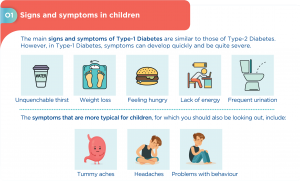
- Fatigue.
- Irritability.
- Your child’s breath may have a fruity smell. (Especially in case of Diabetes Type 1).
- Blurred vision.
- Itching at the genitals and increased infections, Especially Yeast infections.
- Increased tendency to be easily wounded and the wounds take so much time to heal.
- Patches of dark skin.
- Tingling or numbness in hand and/or feet.
In a study published in the International Journal of Pediatric in August 2018, it is found that diabetic children’s sense of smell could be decreased which affects many behaviors like feeding, fear, and social interaction.
Take care: your child could have Diabetes and there are no still symptoms appearing.
Diagnosis of diabetes in children
It may depend on symptoms plus lab tests. However, there are asymptomatic patients as found in pediatrics and neonatology on 9 November 2018. Thus, it is safer to check through lab tests and neonate examination procedures.
Lab Tests Include:
- Blood sugar levels; Above 140 mg/dl for fasting and above 200 mg/dl after a meal by 2 hours (Random glucose blood levels).
- Hemoglobin A1C (Hb A1C) above or equal to 6.5%, can not be used alone in diagnosis, it mainly used to indicate diabetic control in Diabetic patients.
- Glucosuria, which is the presence of glucose in the urine. Because the kidneys have a limited capacity of returning filtered glucose back into the circulation (in normal individuals all the filtered amount reabsorbed back to blood). During diabetes the glucose levels are high. So, the filtered amount through the kidneys is high exceeding the kidney’s capacity of returning sugar back. Therefore, the excess is excreted with the urine.
- Oral glucose tolerance test (OGTT): This test takes a full day in the lab. Where your child is fasting for the previous 12 hours and administer glucose or glucose dissolved in water orally. Then, measure glucose levels after different times; for example, at time zero, after 1, 2, 3… hours to see the pancreas or body response to glucose oral load.
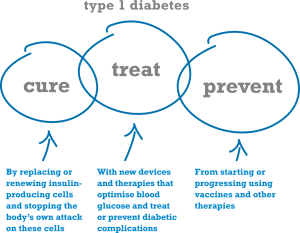
Now, it became clearer how to identify whether your child is at risk or with Diabetes Mellitus or not. It is highly important to know that in many cases, lifestyle regarding food, sports, and weight are what influences having diabetes or not in many children. So, my advice is to always take care of your children lifestyle as well as keep checking for diabetes if you have a history of it. In order to take all the precautions for avoiding Diabetes Mellitus.

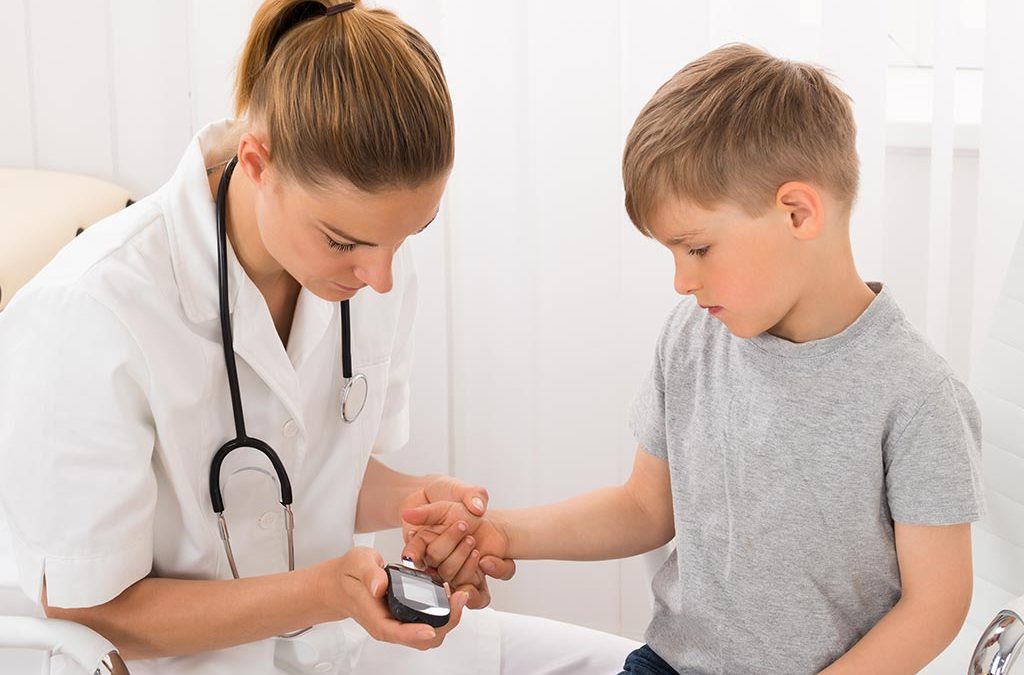


Signal of diabetes comes early if we take precaution on time and change our lifestyle little
We can avoid this termite like disease as this attack our organs one by one
I suggest daily 30min. Brisk Walk.